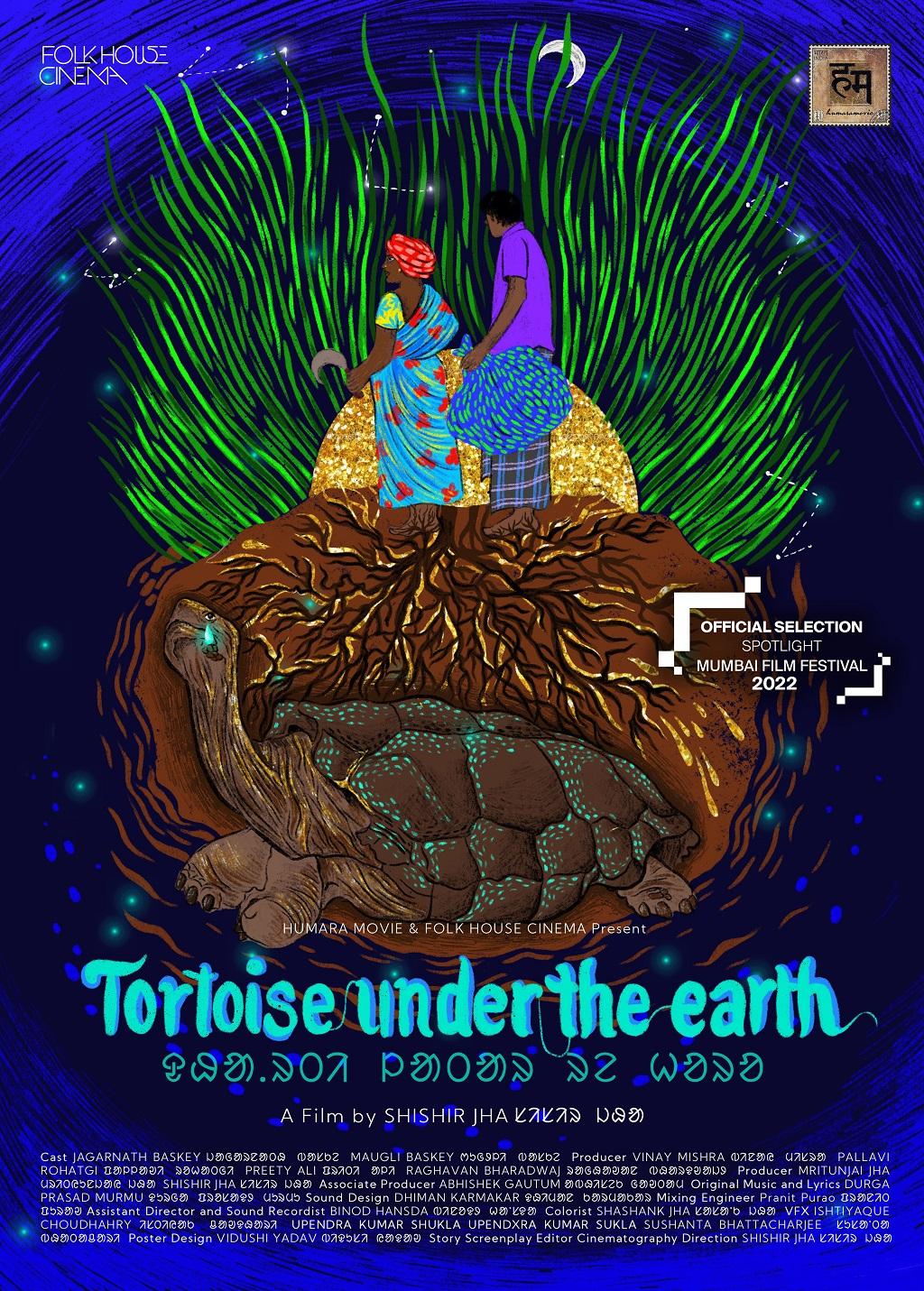by Brian Hioe
語言:
English
Photo Credit: Screenshot
TORTOISE UNDER THE EARTH, described as somewhere between a documentary and fiction by director Shishir Jha, takes a mostly fly-on-the-wall approach to its subjects. This would be an elderly couple in a remote area of Jharkhand, India. While the two are dealing with the loss of their daughter, they are also about to be driven off of the homes that their families have inhabited for generations due to uranium mining.
Rather than any moments of high drama, Jha primarily shows the couple discussing their possible fate calmly, as they grieve their loss. A number of scenes show the couple singing or discussing the traditional creation myths of their people, the Adivasis.
For the most part, the film maintains a narrow focus on the couple, though some relatives of the couple appear. At the same time, traditional ceremonies of the Adivasis are shown, showing the broader community. As such festivities take place even as the community is set to be displaced by the government, this is depicted in a sobering light. But even then, the camera maintains a level, objective gaze. So, too, with scenes of the community packing up and departing from their homes en masse.
There is no real narrative structure to the film. Instead, the movie simply follows its protagonists for a certain period of time, up until the point of their departure. The departure is arguably the only real moment of drama in the film, as the husband decides to run away and refuses to leave the community, perhaps feeling that he would be a burden to his wife.
It would not be right to say that Tortoise Under the Earth is only atmospheric. But the film does benefit from many excellently composed shots of the natural landscape, drawing out both its beauty and also its haunting character.
Film trailer
Namely, part of the central metaphor of Tortoise Under the Earth is that the land both gives life and takes it. The film begins with the metaphor of a banyan tree that the people in the village view as having magical powers, because of the fact that those that went near it tended to die. As it turned out, this was not due to any magical powers from the tree, but from uranium.
This conceit, then, extends to the rest of the film. Ultimately, this metaphor serves to encapsulate the lives of the characters, their community, and of the environs they inhabit.
That is, the film’s characters seem to find themselves subject to powers beyond their control. The couple has no choice but to have faith in what the government says, for example, as their village packs up and leaves. But, having been on the land for generations and, more importantly, because their memories are tied to the land, they are reluctant to leave.
There is certainly an ecological undertone to Tortoise Under the Earth. The title comes from one of the creation myths of the Adivasis about there being a turtle deep in the earth. The two main characters speculate to some extent about whether mining hurts the turtle. But the film still avoids broader commentary on developmentalism in contemporary or on Indian society as a whole, likely because it places the couple and their subjectivity at the center of its narrative. Though for other films, this could be a weakness, it proves to be one of the movie’s strengths, in that it avoids cheap moralism or preachiness.
In centering the subjectivity of its characters, the film deftly avoids any exoticizing gaze, too. Nor is the element that the community has spent generations on the land played up for dramatic purposes. This is simply reality for the Adivasis people.
To this extent, Tortoise Under the Earth does not have any high-minded commentary on the lives of the Adivasis or on the couple that it focuses on. The sparse dialogue in the film is in all cases understated.
But it does need anything more than that. The movie’s naturalistic gaze on the two main characters and the land that they inhabit is enough. In this respect, Tortoise Under the Earth is not only a beautiful film, but one mature in its perspective. The film proves a standout in this respect.



